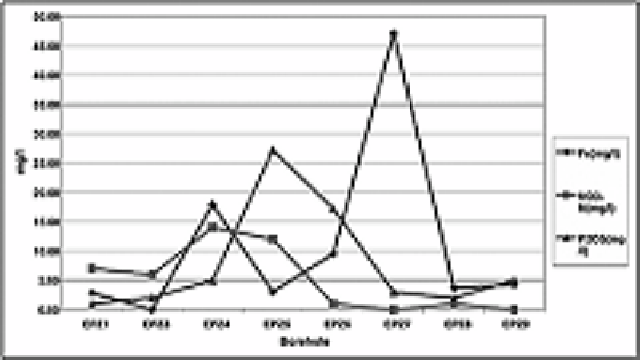Environmental Engineering Reference
In-Depth Information
intestinal problems and other more serious health risks are likely to occur if the water is
consumed and many people can be infected. This makes it risky to use the water as
potable water. The water can be used for other purposes such as agriculture, and if
groundwater is the only source of drinking water, then it must be boiled, since
chlorinating would be an expensive alternative.
Metal levels are only problematic in the cases of iron and nickel. Nickel levels are
unsafe throughout the area, including the control, suggesting that this is a natural regional
problem. Iron levels are much higher in the settlement than at the control. This could be
related to excavation and rusting of metal fixtures during construction activities, as more
dwellings are built - both in terms of densification in the formal areas and in terms of
further informal settlement. Levels of zinc are also much higher in the settlement than at
the control, although they are within safe limits.
It is clear that the major shallow groundwater contamination problems associated with
Epworth semi-formal settlement are increased levels of coliform bacteria and nitrates.
High levels of these parameters are most likely to be caused by the abundant pit latrines -
although nitrate levels could also have been influenced by urban agricultural practices. It
is therefore suggested that efforts to mitigate the impact of semi-formal settlements on
groundwater should focus firstly on improving sanitation - which also would improve
livelihoods.
Figure 6.6. Levels of selected
parameters in groundwater, Epworth.
It can be noted from this study that groundwater contamination is higher closer to dambos
and these could be zoned as aquifer areas unsuitable as water sources for drinking
purposes.
The only significant problems encountered with metals in the shallow groundwater at
Epworth are the cases or iron and nickel. The latter is a natural regional problem and the
former could be related to ongoing construction activities. Zinc distribution in the
groundwater follows that of iron, and could be related to the same cause. However, the

